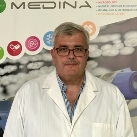Isolation and Structure Elucidation of Marine Secondary Metabolites
A special issue of Marine Drugs (ISSN 1660-3397).
Deadline for manuscript submissions: closed (31 December 2018) | Viewed by 57500
Special Issue Editor
Interests: chromatography; mass spectrometry; liquid chromatography; natural product chemistry; nuclear magnetic resonance; bioactivity; medicinal chemistry; NMR structure elucidation; LC-MS/MS; MIC; compound isolation; structure elucidation; natural products; metabolite identification; alkaloids; pharmacognosy; bioassays; HPLC-UV; bioactive secondary metabolites; marine natural products
Special Issues, Collections and Topics in MDPI journals
Special Issue Information
Dear Colleagues,
Marine organisms have been a source for a vast number of secondary metabolites. These range from simple to highly-complex structures, some of which have found use in clinical practice due to their outstanding biological properties. Methods for the isolation and structural characterization of such molecules have experienced great advances over the last decade, allowing the elucidation of complex structures, even isolated at the nanomole scale. This Special Issue will cover aspects related to this field, highlighting papers on new isolation procedures or on the development of new methodology to tackle challenging structural elucidation problems. Articles covering the isolation and characterization of new marine metabolites, especially those with interesting biological properties, will also be considered.
Dr. Fernando Reyes
Guest Editor
Manuscript Submission Information
Manuscripts should be submitted online at www.mdpi.com by registering and logging in to this website. Once you are registered, click here to go to the submission form. Manuscripts can be submitted until the deadline. All submissions that pass pre-check are peer-reviewed. Accepted papers will be published continuously in the journal (as soon as accepted) and will be listed together on the special issue website. Research articles, review articles as well as short communications are invited. For planned papers, a title and short abstract (about 100 words) can be sent to the Editorial Office for announcement on this website.
Submitted manuscripts should not have been published previously, nor be under consideration for publication elsewhere (except conference proceedings papers). All manuscripts are thoroughly refereed through a single-blind peer-review process. A guide for authors and other relevant information for submission of manuscripts is available on the Instructions for Authors page. Marine Drugs is an international peer-reviewed open access monthly journal published by MDPI.
Please visit the Instructions for Authors page before submitting a manuscript. The Article Processing Charge (APC) for publication in this open access journal is 2900 CHF (Swiss Francs). Submitted papers should be well formatted and use good English. Authors may use MDPI's English editing service prior to publication or during author revisions.






